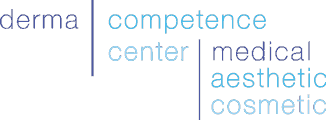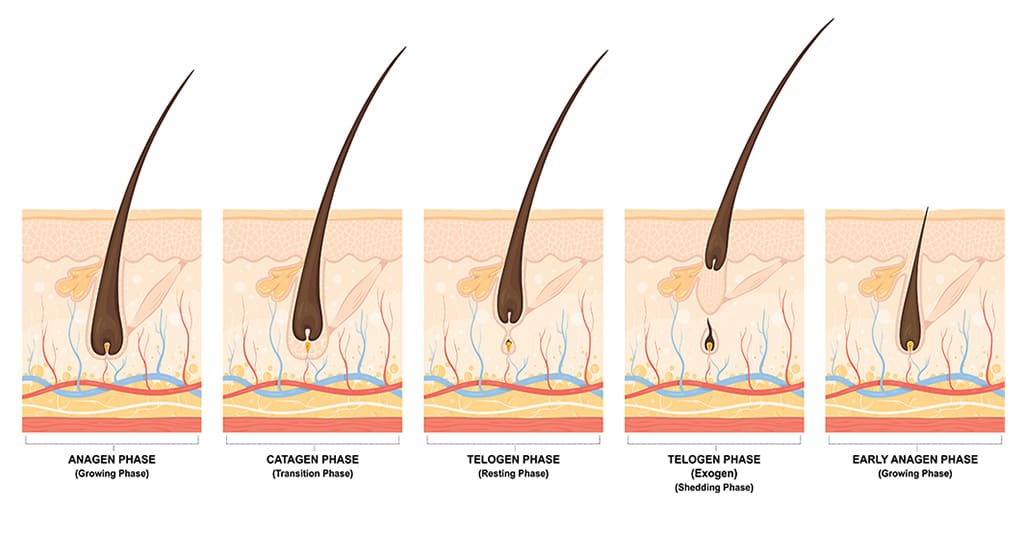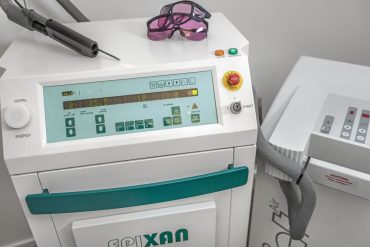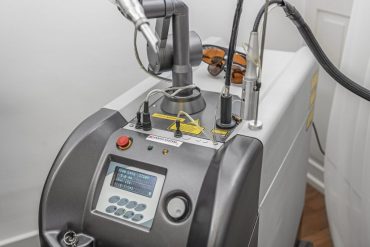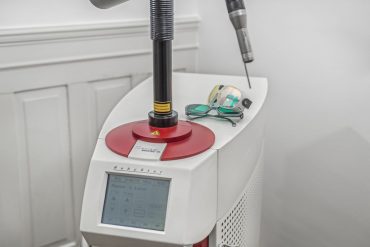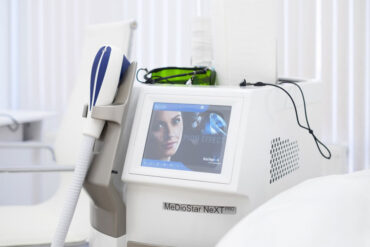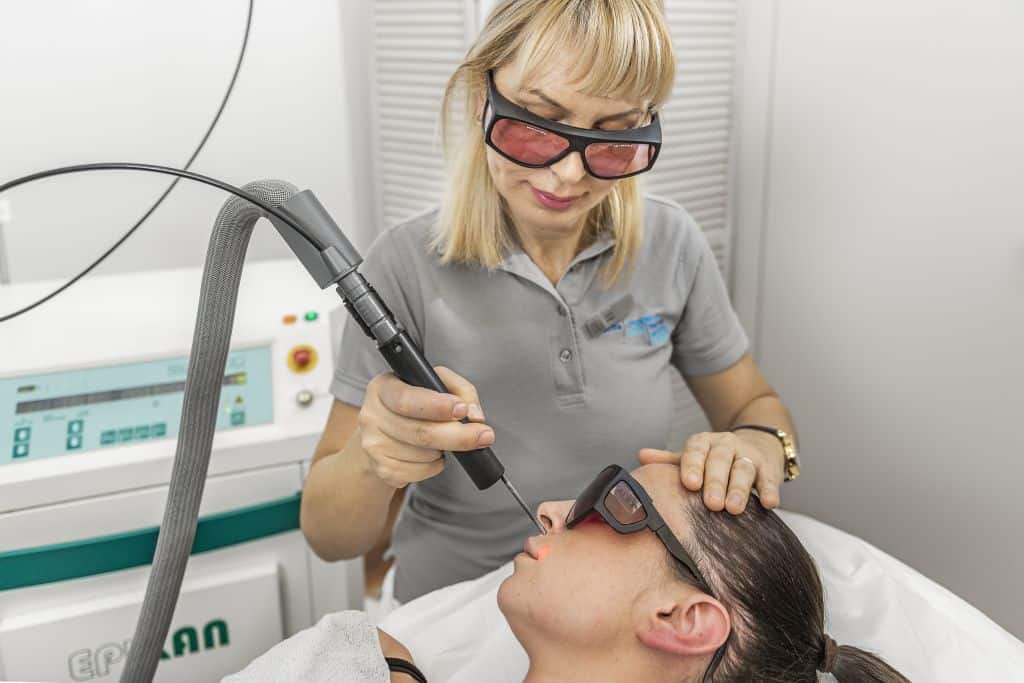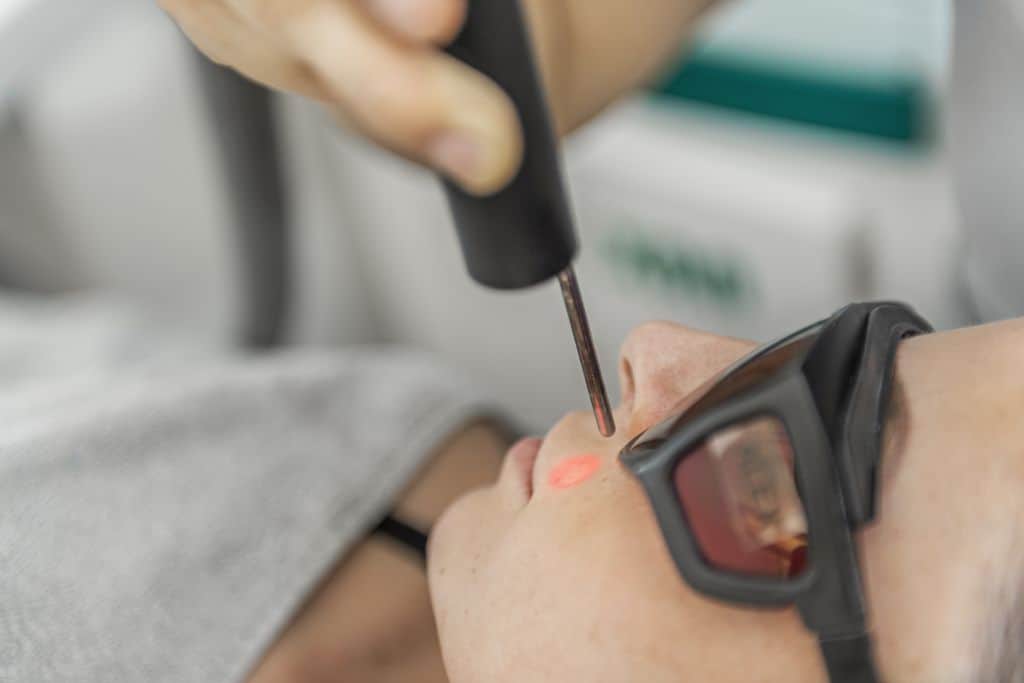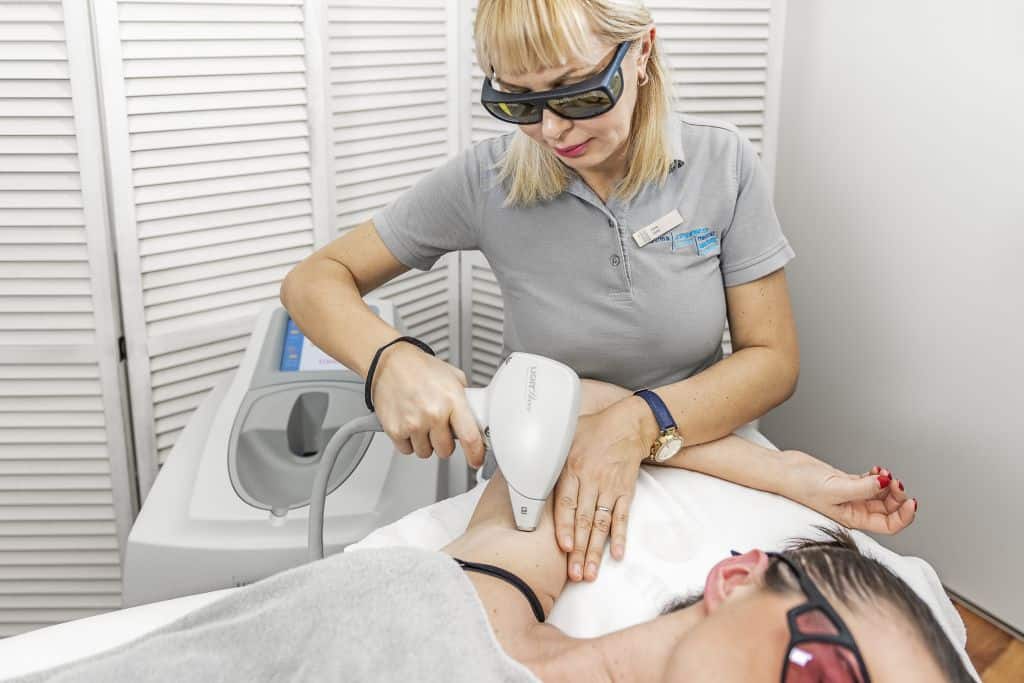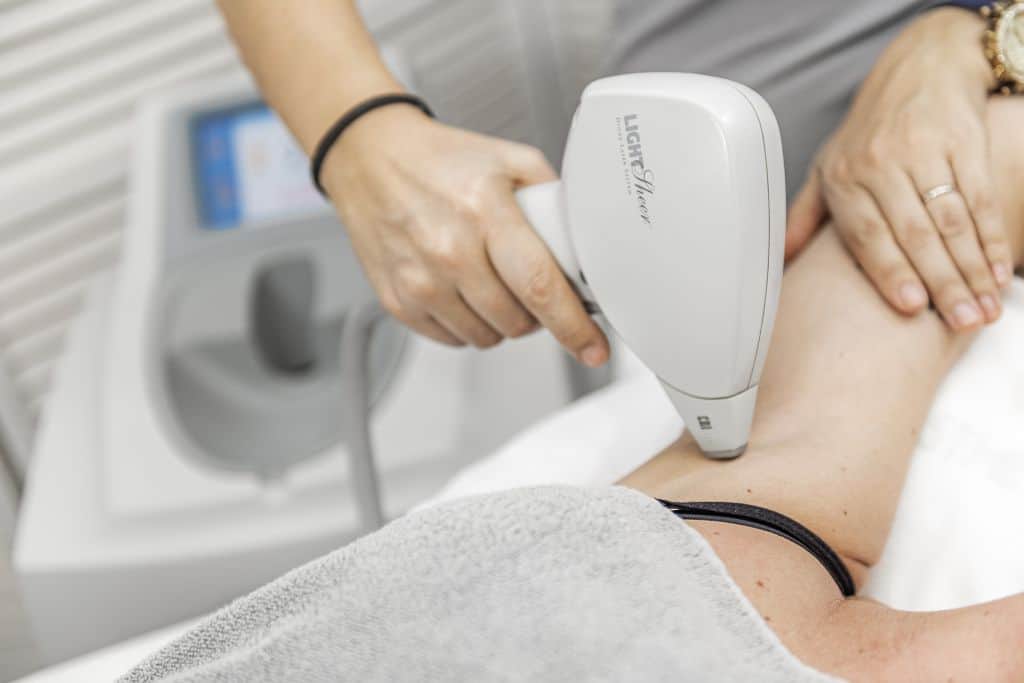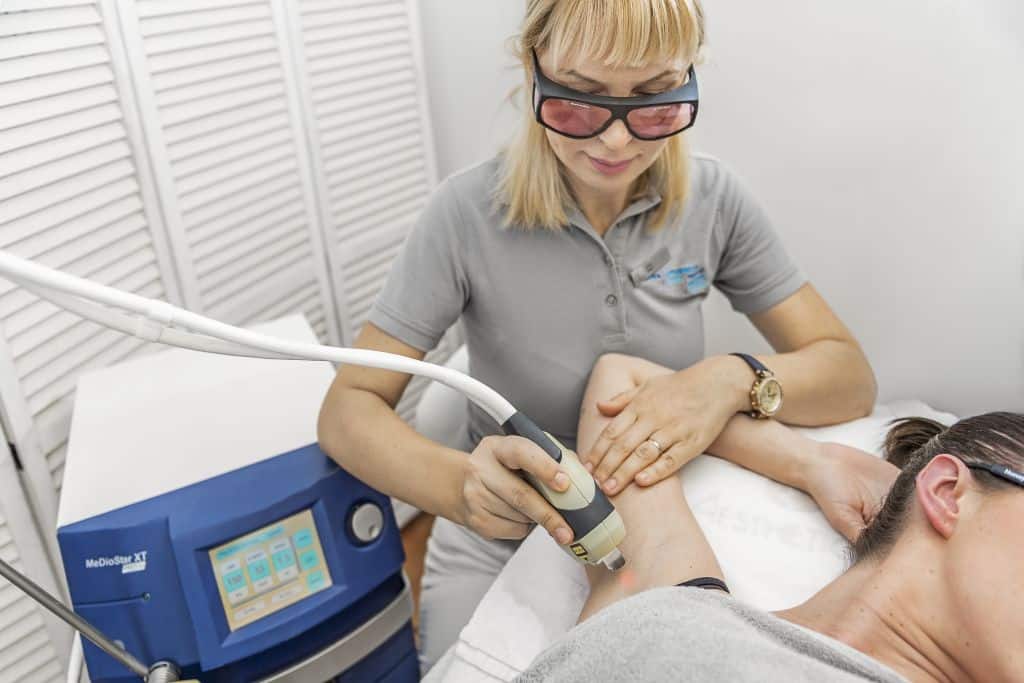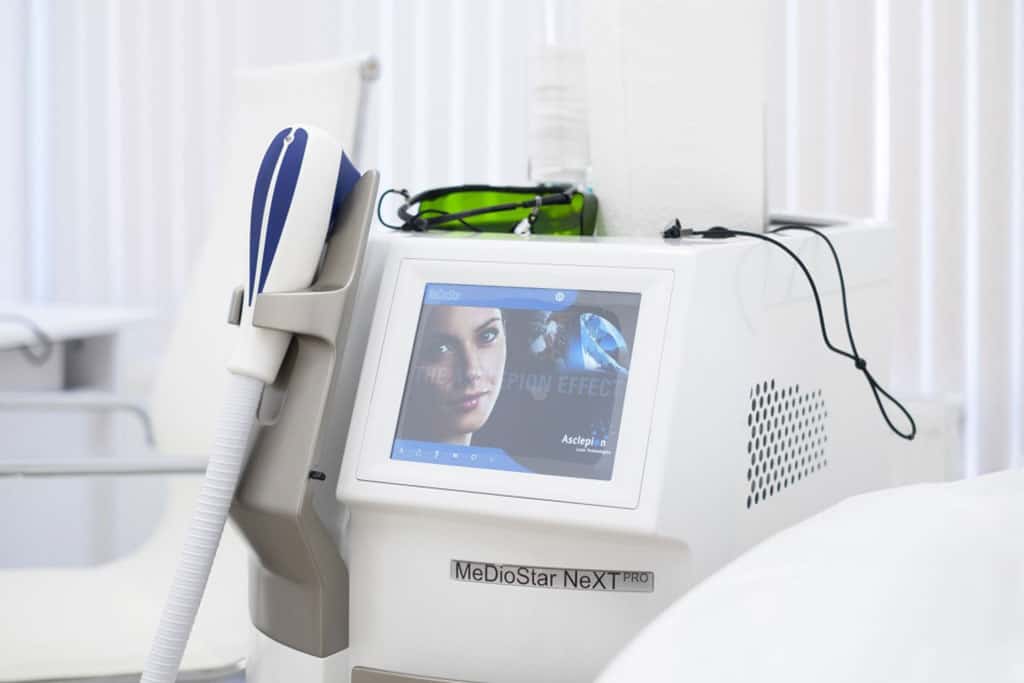Introduction
Hair on body areas, where they should not grow can be very irritating.
With professional laser hair removal, repeated shaving or depilation can be avoided. In addition, razor rash caused by these methods on the face, underarm, bikini line or intimate areas can also be avoided with permanent laser hair removal. The skin looks and feels smooth, supple and healthy.
TABLE OF CONTENTS
- Why is hair removed? (The hair removal trend.)
- Aside from aesthetics, what other reasons are there for permanent hair removal?
- Which areas of the body are suitable for permanent hair removal?
- What is non-permanent and what is permanent hair removal?
(Depilation/ Epilation/ Long-lasting hair reduction ) - How does permanent laser hair removal work?
- How often are treatments needed?
- What devices are there for permanent hair removal with laser light? (Laser, IPL)
- What is the procedure for professional laser hair removal?
- Example of treatment
- General questions about laser hair removal.
(side effects, seasons, session duration, sustainability, costs.) - Laser hair removal facts
1. Why is hair removed?
The hair removal trend.
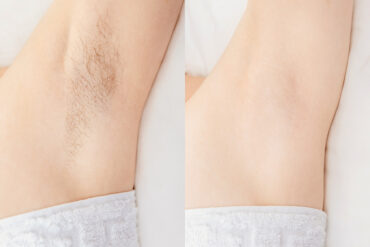
Full or partial body hair removal has deep roots in various cultures around the world and was practiced to a large extent for hygienic reasons. There are even drawings from antiquity in which women are depicted with a depilated pelvic area.
The practice of partial or full hair removal still continues today. However, it has taken on new dimensions. Quite frequently individual regions such as only the underarms or pelvic area are dehaired. But removing all body hair is also common.
In modern times, to have or not have body hair is above all a question of practiced aesthetics and not necessarily hygiene and is subject to transitions in fashion.
Hair removal is mostly a question of personal aesthetics!
In the last 2-3 years however, it has gained popularity and hair removal is once again proving to be a fashionable and social trend.
2. Aside from aesthetics, what other reasons are there for permanent hair removal?
There are hormonal conditions whereby patients suffer from excessive hair growth in areas not prone to have excess hair (masculine hair growth in women).
Male-patterned hair growth in women can be an indication of other diseases or conditions!
There are also conditions such as inflammation of the hair roots, ingrown hairs and coccyx fistula, which can be triggered by increased hair growth. Laser hair removal helps with these conditions.
3. Which areas of the body are suitable for permanent hair removal?
In principle, all unwanted hair can be permanently reduced by laser. Removal of unwanted hair is most frequently requested for the face, underarms, bikini line and complete or partial removal in the pelvic region. Men frequently undergo laser hair removal for the shoulders and back.
Unwanted hair can be removed all over the body!
4. What is non-permanent and what is permanent hair removal?
When removing body hair, basic distinction is made between two different types of hair removal:
Non- permanent Hair Reduction
Depilation
This is the removal of hair on the surface of the skin. This is done by cutting, shaving, hair removal creams or burning. The hair follicle stays intact, and the hair grows back with the natural growth cycle.
Epilation
This is the removal of the entire hair inclusive of the root.
By pulling the hair by the root with sugaring (Halawa), waxing, threading, tweezers or with an epilator device, the hair bulb is not destroyed.
These are not permanent hair removal methods.
Permanent Hair Reduction
Only when the hair bulb is damaged, be it by electro-, or nowadays mostly by photoepilation (light energy), is permanent hair reduction achieved.
Photoepilation for long lasting hair reduction is furthermore the correct term for treatment with light energy for the reduction of hair growth.
Only with laser light or electrolysis can the hair follicle be damaged!
Terms such as permanent laser hair removal, long lasting body hair removal with laser, hair removal device for permanent freedom from unwanted hair, hair remover or hair free laser can be misleading because complete and forever permanent hair removal is unrealistic. These “terms” however, have become customary references for permanent reduction with light energy and are therefore also used here for simplification.
5. How does permanent laser hair removal work?
Photoepilation, laser hair removal, is a photothermal effect. It is based on the principle of «extended selective photothermolysis».
This means that the pigment in the root of the hair is the laser’s target. The light energy is absorbed by the hair’s pigment and converted into heat. The resulting heat damages the bulb at the base of the hair follicle containing growth cells, the hair falls out and regrowth of the hair is prevented.
Before laser hair removal, hair should only be shaved, no plucking, waxing or epilation!
6. How often are treatments needed?
Human hair goes through different phases in its life cycle. In the growth phase, in which most hair is in, the hair follicle is at the strongest stage of development. In this phase it represents an optimal target for the laser. The pigment in the hair follicle can absorb a lot of laser light and thus generate the greatest possible amount of heat.
Since not all hairs are in this phase at the same time, the dermatologist always has to carry out several sessions in order to achieve successful laser hair removal and remove as much hair as possible.
The time interval between the individual hair removal sessions therefore depends on the cycle of the hair on the individual parts of the body and must be adapted accordingly.
For facial hair, there should be an interval of approx. 4 weeks between laser hair removal sessions at the dermatologist. For other parts of the body, longer breaks between laser hair removal sessions with a dermatologist are more sensible.
Several sessions are always necessary!
The full treatment is usually successfully completed after 4-6 sessions, when 85% to 95% of the hair has been removed.
However, practice shows that a small, very small percentage of hair grows back over time. The hairs that do grow back are usually gone after a single session.
The best results and the fewest number of permanent laser hair removal sessions can be expected on dark hair and light skin.
7. What devices are there for permanent hair removal with laser light?
There are basically two different systems for permanent hair removal with light energy:
© logo3in1 / stock.adobe.com.
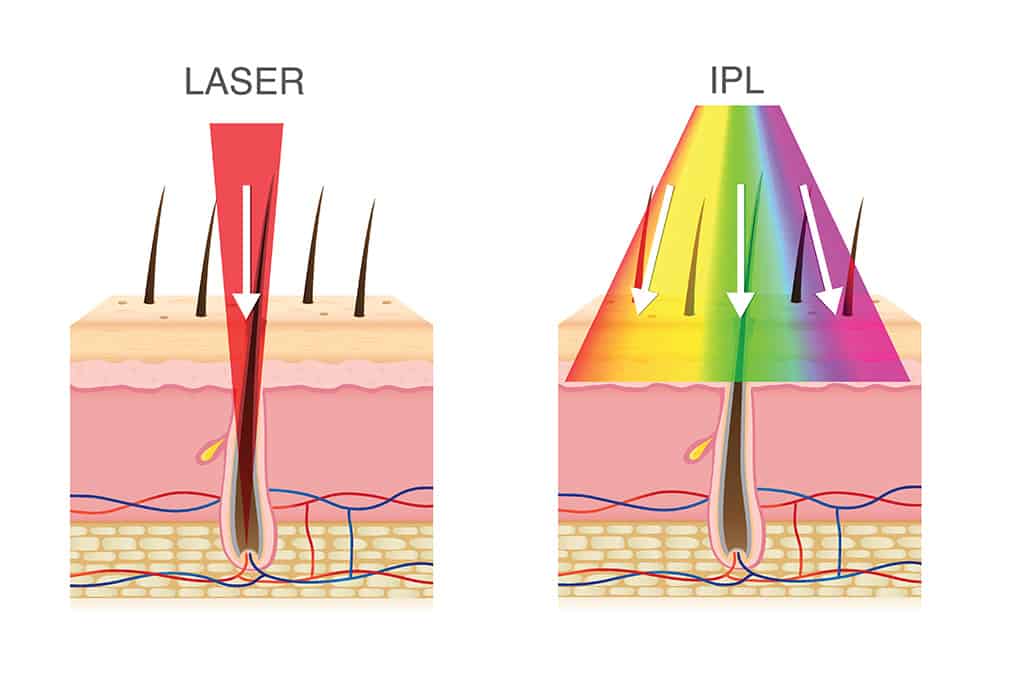
A hair removal laser works with one wavelength. IPL works with a multitude of wavelengths, so other structures of the skin can be affected.
7.1 Laser
On the one hand, there are the actual, classic lasers. These devices are used by most dermatologists and preferred in the dermatology . These classic lasers work with a single wavelength and can be directly aimed at the actual target, the pigment in the hair follicle.
Laser systems for hair removal could have different wavelength. Each wavelength has its own absorption maximum in the pigment of the hair follicle. In this way, the most suitable hair removal laser should be used, according to skin and hair type.
Dr. Schnitzler has different laser systems for hair removal that are necessary for the different wavelengths and with his experience he can achieve optimal results for the patients.
Overview of the different laser at erma competence center:
7.2 Intense Pulsed Light (IPL)/ Super Hair Removal (SHR)
On the other hand, there are the so-called flash lamps, the Intense Pulsed Light Laser (IPL Laser). These devices are not subject to the laser protection act and may also be operated by non-doctors (beauty salons). They work with a wavelength spectrum, i.e., with several wavelengths at the same time in one pulse. These different wavelengths in one pulse are not only absorbed in the targeted hair root itself but can also influence other structures of the skin and quickly lead to undesirable side effects.
Innovations such as the SHR depilation method (Super Hair Removal) are actually not new techniques, only the way the light energy is applied is different.
Dr. Schnitzler does not use IPL- and SHR-Techniques for hair removal in his practice because he is convinced of the advantages and greater success using classic lasers for hair removal.
8. What is the procedure for professional laser hair removal?
To begin, dermatologist Dr. Hero Schnitzler in Zurich Enge conducts an examination of the skin, advises and explains laser hair removal to his patients.
The actual session of laser hair removal goes as follows:
- Greeting the patient
- Accompanying you to the treatment room
- Ask about the last session and whether the skin has been tanned or if exposure to UV-rays has been avoided
- The area to be treated is marked
- Examination of the area to be treated
- If necessary, the area of skin to be treated is shaved, (before treatment, only minimally small stubble should be visible on the surface of the skin, if at all. Otherwise, the laser energy will be absorbed by the hair above the skin.)
- If necessary, local anesthetic cream is applied
- Cleaning the treatment area
- Verification of the correct laser parameters
- Lasering with cooling
- Subsequent cooling of the treated area
- Soothing aftercare
- Arrangement of follow-up appointment
9. Example of treatment
Hair removal on the upper lip with the Alexandrite Laser. No direct skin contact is necessary due to the surface cooling with cold air.
Permanent removal of underarm hair with the LightSheer Diode Laser, very effective for smaller treatment areas, minimal pain in sensitive body regions.
Permanent hair removal with the MeDioStar Diode Laser. Due to its larger coverage capacity and direct cooling-system this hair removal laser is also optimally suited for fast, gentle and minimal discomfort in hair removal on larger skin areas.
10. General questions about laser hair removal
What side effects can occur with permanent hair removal with lasers or IPL hair removal devices?
Laser hair removal as well as IPL treatments, are always slightly painful. If necessary, a local anesthetic cream can be applied before the laser treatment. After the treatment, there may be slight redness the treated area for a few hours.
As the light energy in the skin is converted into heat, burns are the most common serious side effect, especially with nonprofessional treatments.
Exposure to sun or tanning salons before, during and after laser hair removal treatment must be avoided.
Dermatologist Dr. Schnitzler in Zurich Enge unfortunately sees too often the consequences of improper laser treatment. These are burn blisters, pigment shifts and even scars, which then have to be treated by a dermatologist like Dr. Hero Schnitzler.
When should permanent laser hair removal be performed?
Since it is important that the skin is not tanned or exposed to sun as much as possible, it is advisable to carry out permanent hair removal with laser in the fall and winter months.
Fall / Winter months are the best times for laser hair removal.
How long does a permanent depilation last, is it forever?
Since the body has repair mechanisms at its disposal, it not only repairs bones after a break, the skin after an injury, but also the hair roots damaged by a laser. Hair can grow back slightly after months to years.
Hair freedom forever is unrealistic.
How long does a session take?
How long the individual hair removal session lasts depends on the size of the skin area to be treated and of course on the frequency used (number of laser shots per second) as well as the size of the treatment spot of the laser (area covered by a laser pulse).
Different parts of the body need different amounts of time.
An upper lip only takes a few minutes, a large back area can take almost 1 hour.
What does laser hair removal cost?
The cost of laser hair removal also depends on the size of the area to be treated and how often the therapy has to be carried out.
Good quality is often a little more expensive.
Dermatologist Dr. Schnitzler clarifies this important question in his preliminary consultation about laser hair removal.
11. Laser hair removal facts
- 100%, of all hair cannot be removed forever
- Usually, 4-6 sessions are necessary
- Sun exposure must be avoided before and after a session
- The treatment is slightly painful

Autor - Dr. med. Hero P. D. Schnitzler
I am Dr. Hero P. D. Schnitzler and founded the derma competence center in Zurich Enge in 2015, which I have been managing with heart, soul and professional competence ever since.
I am a member of various Swiss and international professional societies and a long-time lecturer for aesthetic laser medicine (D.A.L.M.) at the University of Greifswald, and for the Swiss skills program FMCH laser treatments of the skin.
